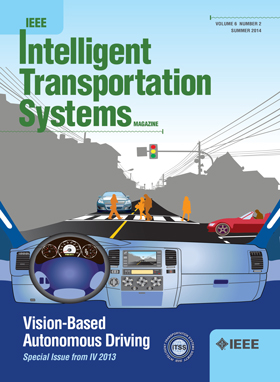Intelligent Reflective Surfaces Assisted Vehicular Networks: A Computer Vision-Based Framework
IF 7.9
1区 工程技术
Q1 ENGINEERING, CIVIL
IEEE Transactions on Intelligent Transportation Systems
Pub Date : 2025-02-28
DOI:10.1109/TITS.2025.3543870
引用次数: 0
Abstract
This paper addresses the challenges faced by 6G-enabled vehicular networks (V-Nets), including increasing road traffic, ultra-reliable and low latency communication, high data rates, and energy efficiency. The intelligent reflecting surface (IRS) is proposed as a solution to configure the propagation channel in a smart radio environment by adjusting phase shifts. However, designing IRS-assisted V-Nets that achieve ultra-reliability in dynamic and noisy communication is challenging due to the passive nature of the IRS and the limitations of deep reinforcement learning (DRL) methods. To overcome these challenges, this paper presents a computer vision (CV) enabled IRS framework for V-Nets, which combines a convolutional neural network and CV techniques. The framework utilizes real-time visual information to estimate and configure optimal beamforming for IRS-assisted V-Nets. Adapting to real-time network dynamics and intelligently guiding signals, the CV-IRS framework improves prediction accuracy to 95%, an achievable maximum rate of 11.2 bps/Hz with 100 IRS elements, and resource allocation efficiency of 88% with 10 vehicles. The simulation results demonstrate the superiority of the CV-IRS framework over benchmark schemes, making it a promising approach for the efficient configuration of IRS-assisted 6G V-Nets.求助全文
约1分钟内获得全文
求助全文
来源期刊

IEEE Transactions on Intelligent Transportation Systems
工程技术-工程:电子与电气
CiteScore
14.80
自引率
12.90%
发文量
1872
审稿时长
7.5 months
期刊介绍:
The theoretical, experimental and operational aspects of electrical and electronics engineering and information technologies as applied to Intelligent Transportation Systems (ITS). Intelligent Transportation Systems are defined as those systems utilizing synergistic technologies and systems engineering concepts to develop and improve transportation systems of all kinds. The scope of this interdisciplinary activity includes the promotion, consolidation and coordination of ITS technical activities among IEEE entities, and providing a focus for cooperative activities, both internally and externally.
 求助内容:
求助内容: 应助结果提醒方式:
应助结果提醒方式:


